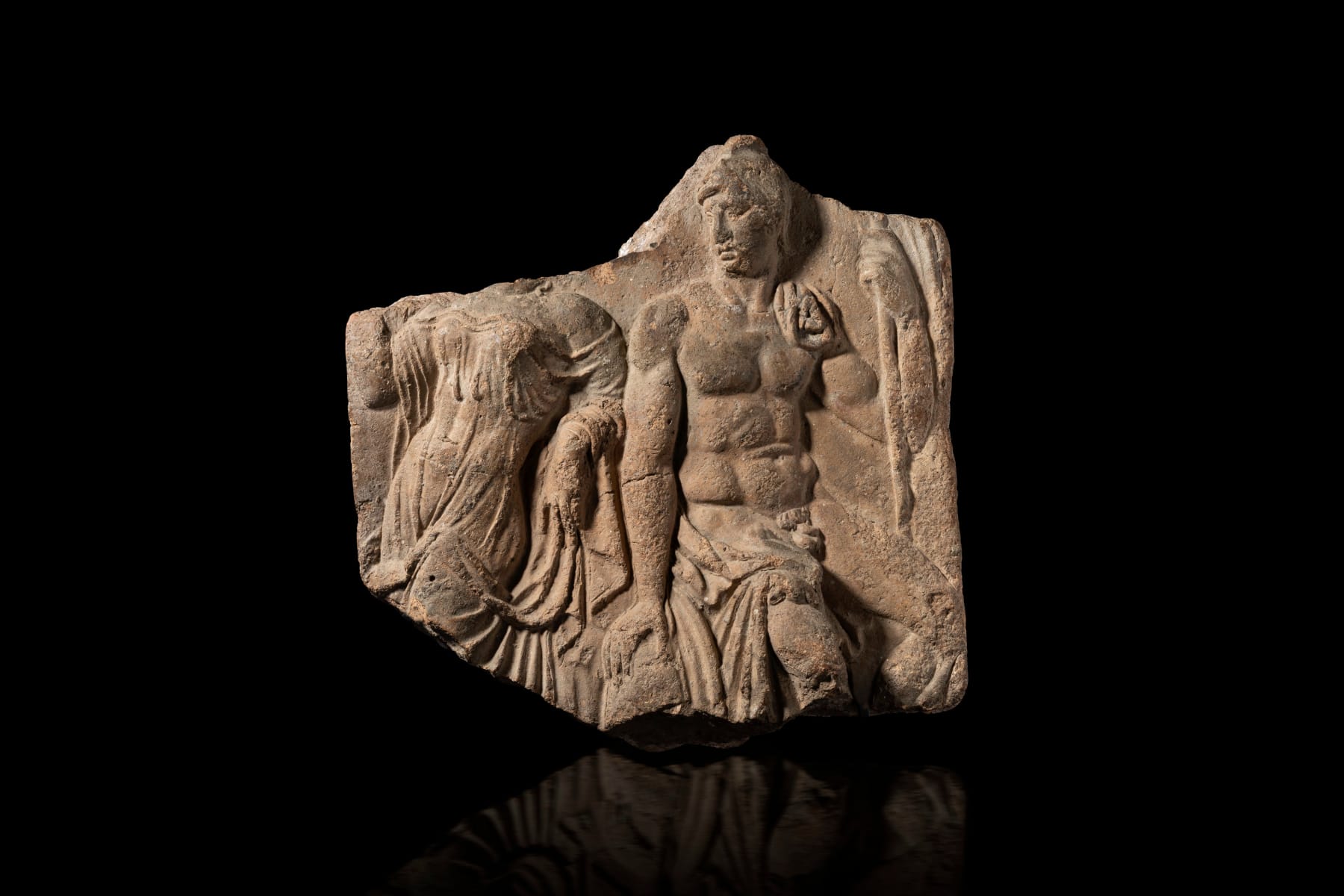Roman
A Roman terracotta Campana antefix fragment, Augustan, late 1st century BC - early 1st century AD
Terracotta
Height: 24 cm; width: 23cm
The scene depicts Venus, the goddess of love, sensuously draped in diaphanous robes standing next to her lover, Mars, the helmeted god of war, whose hand is resting on his...
The scene depicts Venus, the goddess of love, sensuously draped in diaphanous robes standing next to her lover, Mars, the helmeted god of war, whose hand is resting on his circular shield.
Provenance
Regina McKeever Syrjala Collection, Virginia, USA, given as a wedding gift by the interior decorator Ken Allen (d. 1979) in 1951/2, thence by descentLiterature
For a complete antefix depicting the same scene (and likely from the same mould), which is thought to have come from an Augustan temple, see the example in the Metropolitan Museum, New York, acc. no. 96.18.162. These antefixes acted as decorative covers for the ends of roof tiles. There are a few others preserved apparently from the same mould, two from the Campana collection and now in the Louvre collections (acc. no.Cp 3747), and another in the August Kestner Museum (acc. no. 2010.21).Venus and Mars featured heavily in Augustan imagery and ideology. The goddess was imagined to be the ancestral mother of the Julian clan, providing a divine genealogy which authenticated Augustus's place as rightful ruler of the Roman world. After a successful campaign against Julius Caesar's assassins, Augustus built a temple to Mars Ultor in his new Forum, which housed statues of the god of vengeance, Venus and Julius Caesar (Divus Julius).
